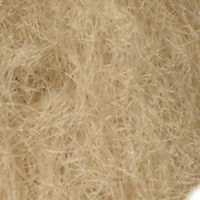The Digital Dye Databank is a continuous cataloging project that documents dyes extracted from various natural and man-made materials found throughout the world. The process of natural dyeing is simple; a material such as a plant, flower, leaf, bark, or any material really is cooked in boiling water for up to three hours to make what's known as a dye bath. Then, a natural fiber such as cotton or wool is placed into the dye bath and extracts a pigment from the bath that permanently adheres to the fiber. Different chemicals known as mordants can alter the color of the dye and allow the dye to better adhere to the fabric. Mordants can range from household items such as vinegar, salt, or ammonia to more complex chemicals from Aluminum, Iron, and Copper and are often applied to the chosen fabric before being placed into the dye bath.
Even though the practice of natural dyeing has existed for centuries throughout different parts of the world, its history is poorly recorded and this project is an attempt to digitally document the results from a variety of plants and materials. Through, rather than focus on the plants that produce the most brilliant colors, this project documents the most common plants and materials that one might walk past everyday. These are colors from the weeds, non-native species, and waste that are often overlooked.
Mordants
The following information details the mordants used throughout the project. They were applied to felted wool and then digitally scanned. The mordants displayed are some of the most commonly used ones for natural dyes, as well as the least toxic.

Control (C): no mordant used, the natural color of the felted wool.

Alum (Al): Potassium Aluminum Sulphate, also know as Potash Alum typically brightens the colors of the dye. It is dissolved into water (a ratio of 20% the weight of the wool) and then cooked with the wool for about three hours and let to sit overnight.

Alum + Iron (Al+Fe): Potassium Aluminum Sulphate with an afterbath of an iron and vinegar solution. Uses the previous Alum recipe, but just adds a small portion of an iron and vinegar solution to the wool after cooking in alum, approximately 20 mins. Iron tends to break down the wool fibers, so it only needs to cook with the pre-mordanted wool for a short time.

Ammonia (Am): A strong base and common household chemical, it is applied to the fiber similarly to Alum in that it is cooked in a water-diluted solution for approximately three hours and then left to sit in the solution overnight. Ratio used for this project is 1 part Ammonia to 8 parts water.

Clubmoss (Cm): Clubmoss from the Lycopodiopsida spp is believed to have potential as a natural mordant containing aluminum. Wool was cooked with with chopped up bunches of clubmoss and then cooked in a dye bath.

Copper (Cu): Copper solution made when pure copper wire is placed into a solution of 1 part Ammonia and 2 parts water for about 2 weeks. The solution will turn a bright blue (as long as it is exposed to air, i.e. unlidded jar). Pre-mordant wool with resulting liquid solution by diluting it in water and cooking for no more than 20 mins, cooking too long will result in a dark brown that is unaffected by any dye.

Iron (Fe): Iron solution made from scrap iron and vinegar. Place any rusty piece of scrap iron or steel in a solution of 1 part vinegar with 2 parts water and allow to oxidize for about 1 week. This mordant must be applied after the fabric has been dyed. Depending on the size of the fabric, place a small amount of the solution into the dye bath with fabric still in it and cook for approximately 30 minutes.

Salt (S): One of the easiest mordants. Cook fiber in boiling salted water for 3 hours and let sit overnight. Ratio is 1 part granulated salt to 16 parts water, or just use seawater.

Urine (U): One of the oldest known mordants. Collect urine and let sit in a jar for at least 2 weeks (the smellier the better). Cook with water solution of 1 part urine to 8 parts water with fiber for at least 3 hours and let sit overnight. Be sure to cook in a well ventilated area, it can make an awfully unpleasant odor.

Vinegar (V): Use plain distilled white vinegar. Cook fiber in a solution of 1 part vinegar to 8 parts water for 3 hours and let sit overnight.
